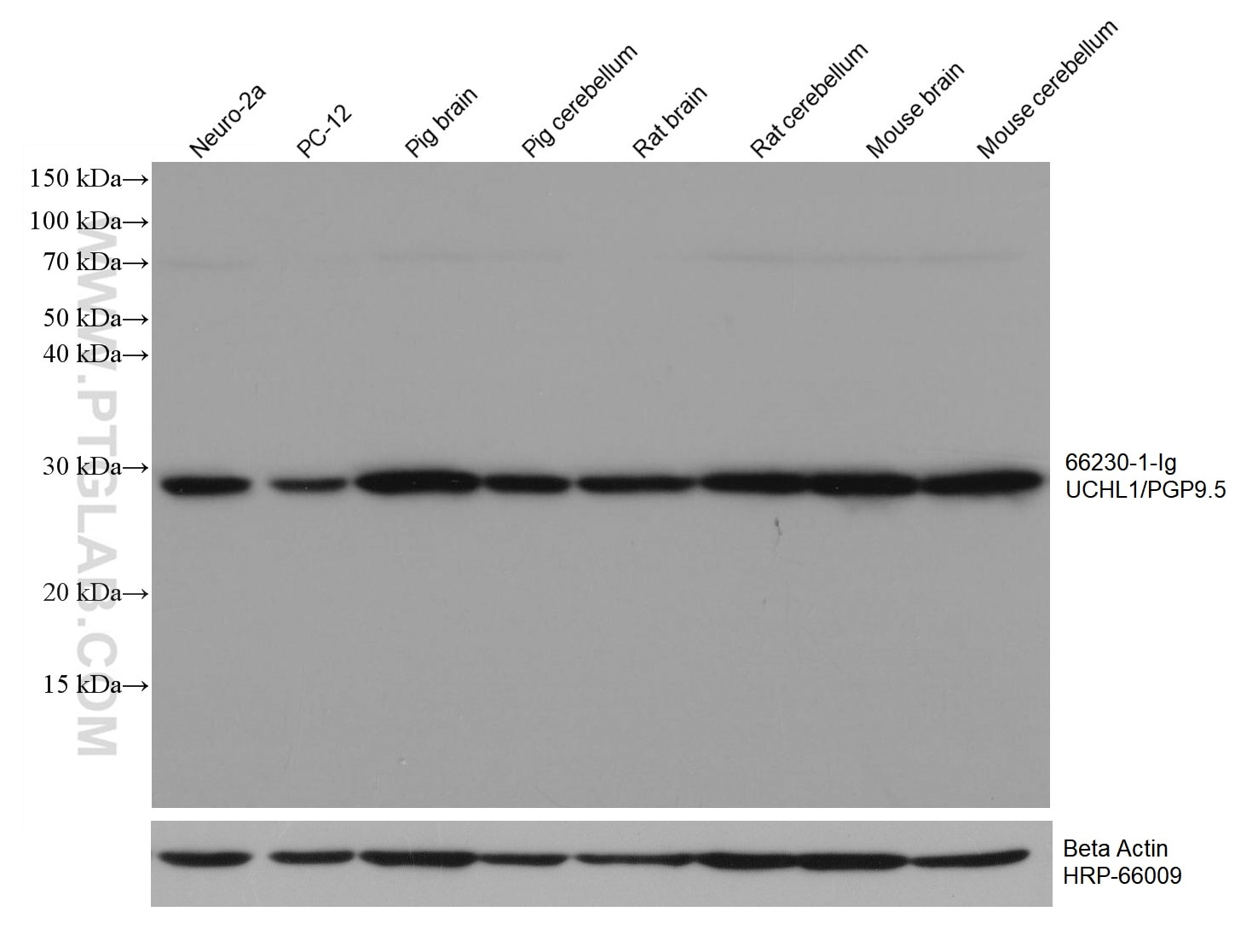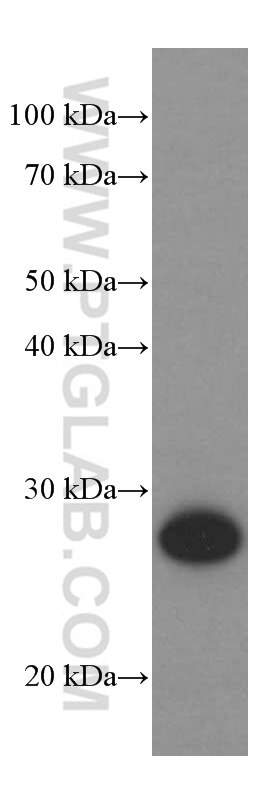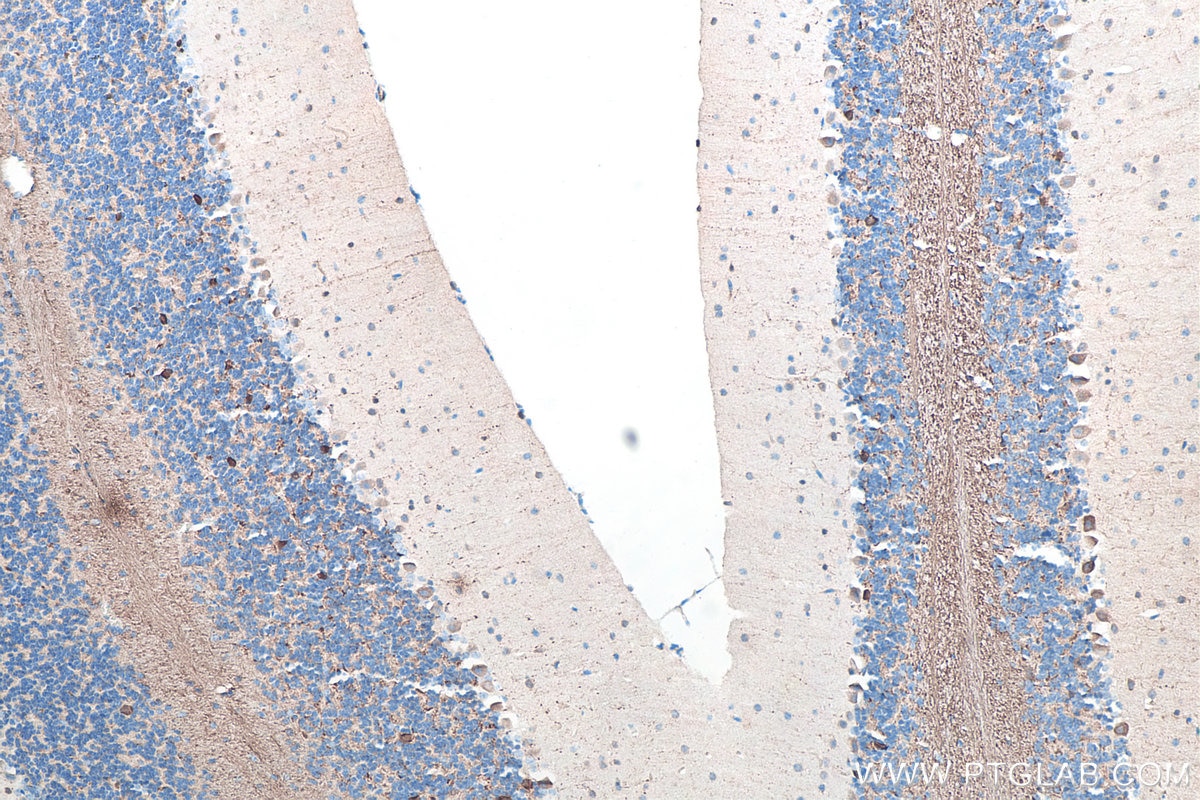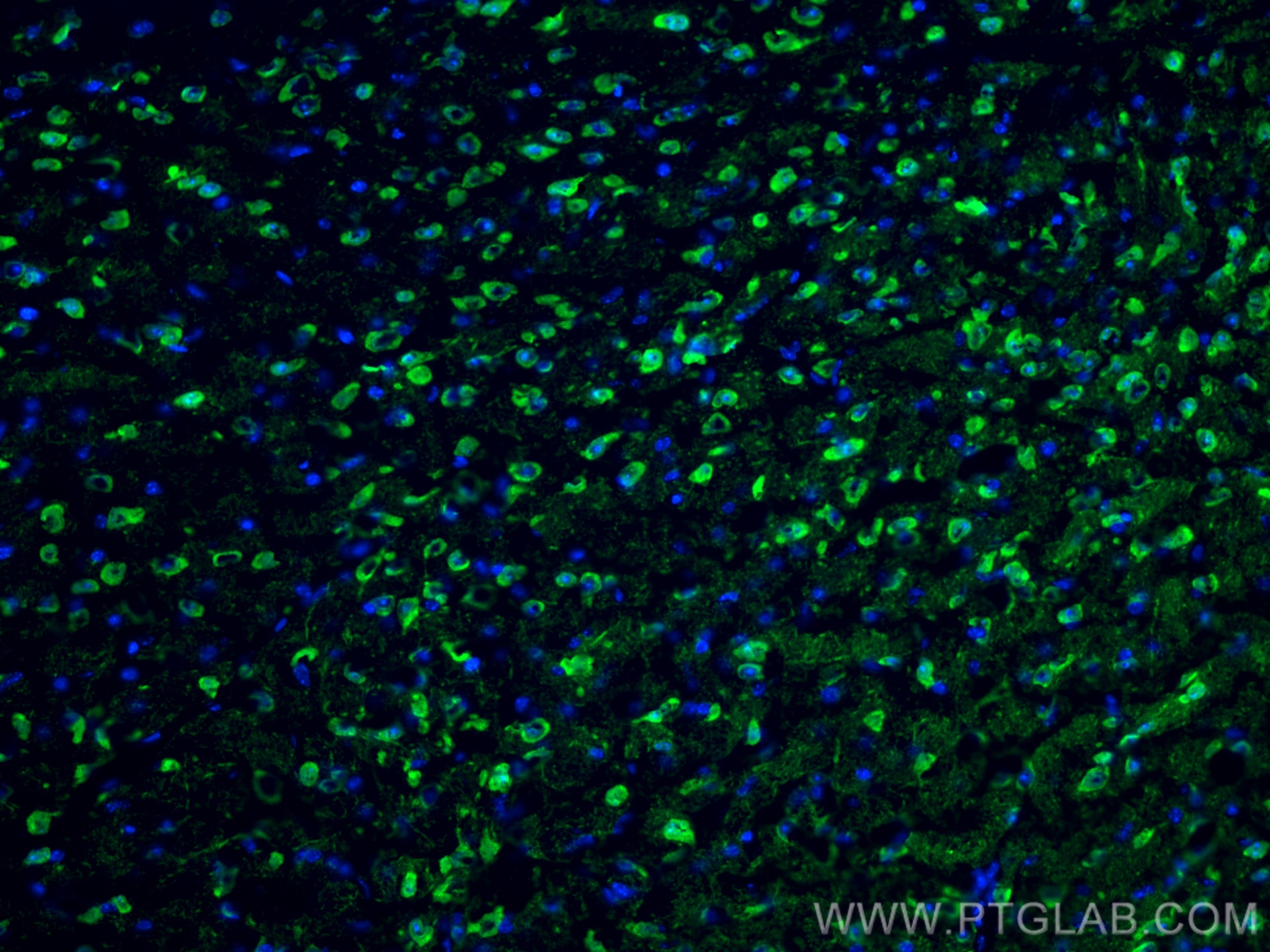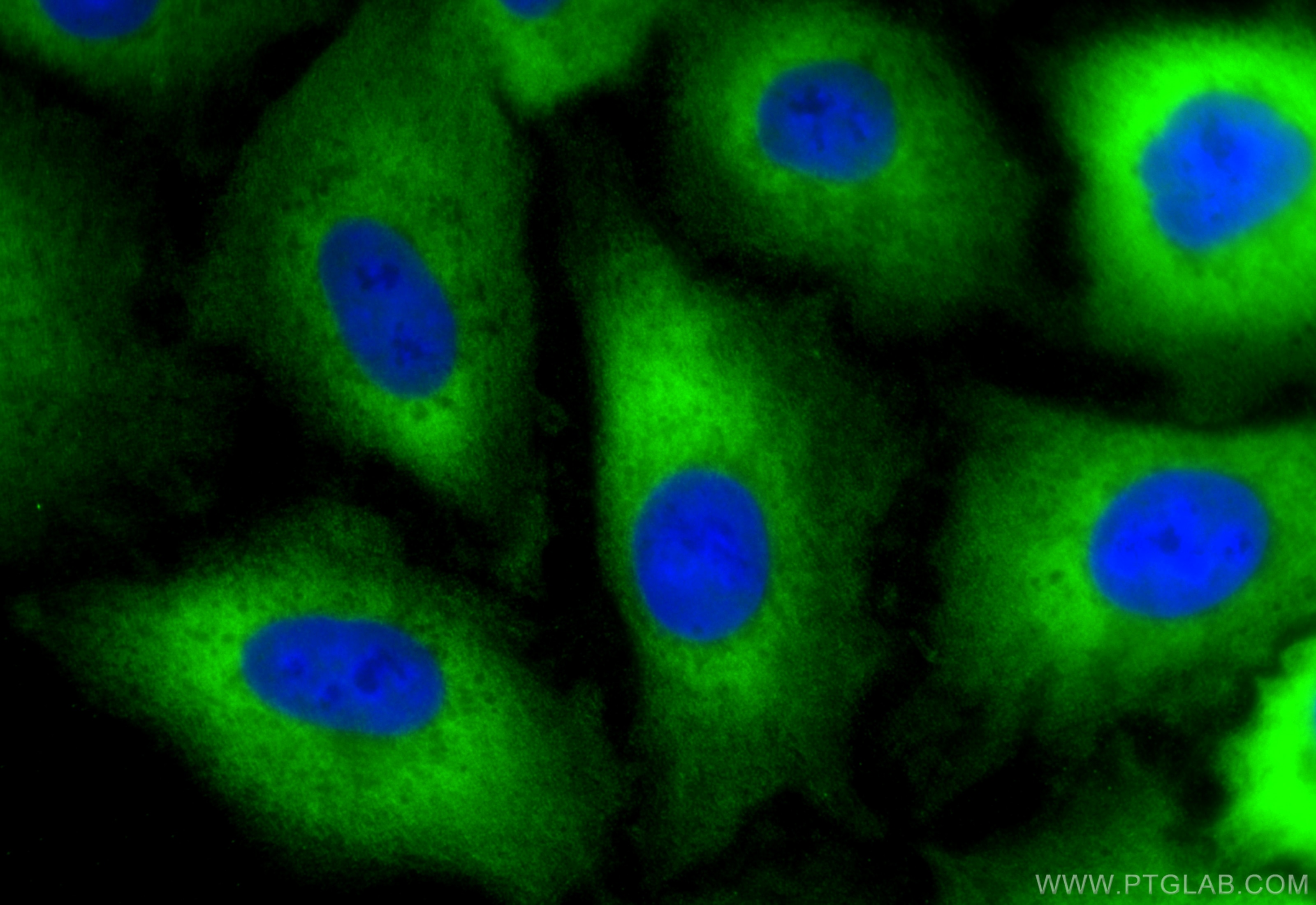- Phare
- Validé par KD/KO
Anticorps Monoclonal anti-UCH-L1/PGP9.5
UCH-L1/PGP9.5 Monoclonal Antibody for WB, IHC, IF/ICC, IF-P, IF-Fro, FC (Intra), ELISA
Hôte / Isotype
Mouse / IgG1
Réactivité testée
Humain, porc, rat, souris
Applications
WB, IHC, IF/ICC, IF-P, IF-Fro, FC (Intra), ELISA
Conjugaison
Non conjugué
CloneNo.
1C9E11
N° de cat : 66230-1-Ig
Synonymes
Galerie de données de validation
Applications testées
| Résultats positifs en WB | cellules Neuro-2a, cellules PC-12, cellules Y79, tissu cérébral de porc, tissu cérébral de rat, tissu cérébral de souris, tissu de cervelet de porc, tissu de cervelet de rat, tissu de cervelet de souris |
| Résultats positifs en IHC | tissu de cervelet de souris, tissu de cervelet de rat il est suggéré de démasquer l'antigène avec un tampon de TE buffer pH 9.0; (*) À défaut, 'le démasquage de l'antigène peut être 'effectué avec un tampon citrate pH 6,0. |
| Résultats positifs en IF-P | tissu cérébral de souris, |
| Résultats positifs en IF-Fro | tissu cérébral de souris, |
| Résultats positifs en IF/ICC | cellules A549, |
| Résultats positifs en FC (Intra) | cellules Y79, |
Dilution recommandée
| Application | Dilution |
|---|---|
| Western Blot (WB) | WB : 1:20000-1:100000 |
| Immunohistochimie (IHC) | IHC : 1:4000-1:16000 |
| Immunofluorescence (IF)-P | IF-P : 1:200-1:800 |
| Immunofluorescence (IF)-FRO | IF-FRO : 1:200-1:800 |
| Immunofluorescence (IF)/ICC | IF/ICC : 1:400-1:1600 |
| Flow Cytometry (FC) (INTRA) | FC (INTRA) : 0.40 ug per 10^6 cells in a 100 µl suspension |
| It is recommended that this reagent should be titrated in each testing system to obtain optimal results. | |
| Sample-dependent, check data in validation data gallery | |
Applications publiées
| KD/KO | See 1 publications below |
| WB | See 6 publications below |
| IHC | See 3 publications below |
| IF | See 10 publications below |
Informations sur le produit
66230-1-Ig cible UCH-L1/PGP9.5 dans les applications de WB, IHC, IF/ICC, IF-P, IF-Fro, FC (Intra), ELISA et montre une réactivité avec des échantillons Humain, porc, rat, souris
| Réactivité | Humain, porc, rat, souris |
| Réactivité citée | rat, Humain, porc, souris |
| Hôte / Isotype | Mouse / IgG1 |
| Clonalité | Monoclonal |
| Type | Anticorps |
| Immunogène | UCH-L1/PGP9.5 Protéine recombinante Ag6547 |
| Nom complet | ubiquitin carboxyl-terminal esterase L1 (ubiquitin thiolesterase) |
| Masse moléculaire calculée | 25 kDa |
| Poids moléculaire observé | 27 kDa |
| Numéro d’acquisition GenBank | BC000332 |
| Symbole du gène | UCHL1 |
| Identification du gène (NCBI) | 7345 |
| Conjugaison | Non conjugué |
| Forme | Liquide |
| Méthode de purification | Purification par protéine G |
| Tampon de stockage | PBS with 0.02% sodium azide and 50% glycerol |
| Conditions de stockage | Stocker à -20°C. Stable pendant un an après l'expédition. L'aliquotage n'est pas nécessaire pour le stockage à -20oC Les 20ul contiennent 0,1% de BSA. |
Informations générales
Ubiquitin C-terminal hydrolase L1 (UCHL1) was originally identified as a neuronal protein that accounts for nearly 2% of total brain proteins. UCHL1 activity protects neurons from hypoxic injury, and binding of stroke-induced reactive lipid species to the cysteine 152 (C152) of UCHL1 unfolds the protein and disrupts its function. Reduced hydrolytic activity of mutant UCHL1 is implicated in the pathophysiologic process of Parkinson's and Alzheimer's disease due to abnormal neurotoxic protein aggregation. (PMID: 31356902, PMID: 30760601)
Protocole
| Product Specific Protocols | |
|---|---|
| WB protocol for UCH-L1/PGP9.5 antibody 66230-1-Ig | Download protocol |
| IHC protocol for UCH-L1/PGP9.5 antibody 66230-1-Ig | Download protocol |
| IF protocol for UCH-L1/PGP9.5 antibody 66230-1-Ig | Download protocol |
| Standard Protocols | |
|---|---|
| Click here to view our Standard Protocols |
Publications
| Species | Application | Title |
|---|---|---|
Theranostics UCH-L1-mediated Down-regulation of Estrogen Receptor α Contributes to Insensitivity to Endocrine Therapy for Breast Cancer.
| ||
Sci Rep Gingival proteomics reveals the role of TGF beta and YAP/TAZ signaling in Raine syndrome fibrosis | ||
Am J Physiol Gastrointest Liver Physiol Carbon monoxide produced by HO-1 upregulation is the main factor behind the abnormal motility seen in experimental ulcerative colitis in mice | ||
World J Gastroenterol Hydrogen-rich water alleviates constipation by attenuating oxidative stress through the sirtuin1/nuclear factor-erythroid-2-related factor 2/heme oxygenase-1 signaling pathway | ||
Toxicol Appl Pharmacol Ursolic acid alleviates paclitaxel-induced peripheral neuropathy through PPARγ activation | ||
